Glaciers and ice sheets are observed to rapidly change under the current global climate conditions. This is particularly the case for those in Greenland. For future projections of change, a long-term, multi-millennial perspective on changes of Greenland ice sheet drainage and local glaciers are of key importance. For example, the dating of glacial deposits such as moraine and rock boulders, provides an essential time component to the understanding of glacial retreat.
Our project focuses on glacial erratics, rocky material that differs from the rock type in its current resting place on Disko Island in Western Greenland. There, granitic boulders from the Precambrian basement rest on the Palaeogene mafic plateau that constitutes most of Disko Island. Our goal is to identify the time of deposition and the original source of these erratic boulders. We will use petrographic analyses to determine where these erratic boulders originated from. To establish a deposition chronology, we will measure terrestrial cosmogenic isotopes (e.g. 10Be).
Studying the southern slope from sea-level to 800 m a.s.l. along the coast of Disko Island, will provide important constraints in the thinning and timing of deglaciation of the former ice stream which covered Disko Bugt, a large bay between Qeqertarsuaq and Ilulisaat. In addition, the results will provide a minimum age constraint for adjacent rockglaciers that are being researched by the partnering, SPI-funded Exploratory Grant project, “RockDynDisko”.
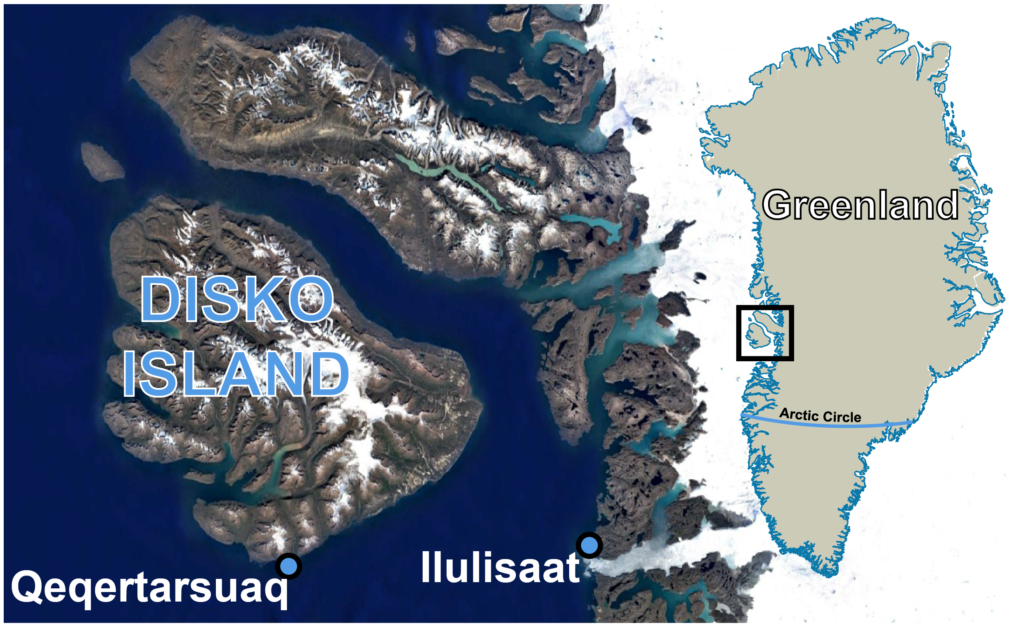
Mapping and dating of erratic boulders on the plateau will provide new constraints on ice cap and ice sheet thickness during the last, and potentially previous, ice age glaciations. It is currently not known if the ice sheet flowed over this mountainous plateau in the last ice age or in which previous ice age, and hence dating will provide former ice sheet thickness constraints.
Based on this background, we headed into field with a clear assignment, to take samples of the erratic boulders that are scattered on the mafic plateau to determine their deposition ages and origins.
The field work of our project started with four days of travel by air and sea. We finally reached Disko Island in the summer of 2021. Unfortunately, we were not welcomed by the best weather. Nevertheless, we took up the challenge to get into a good daily routine as early as possible.
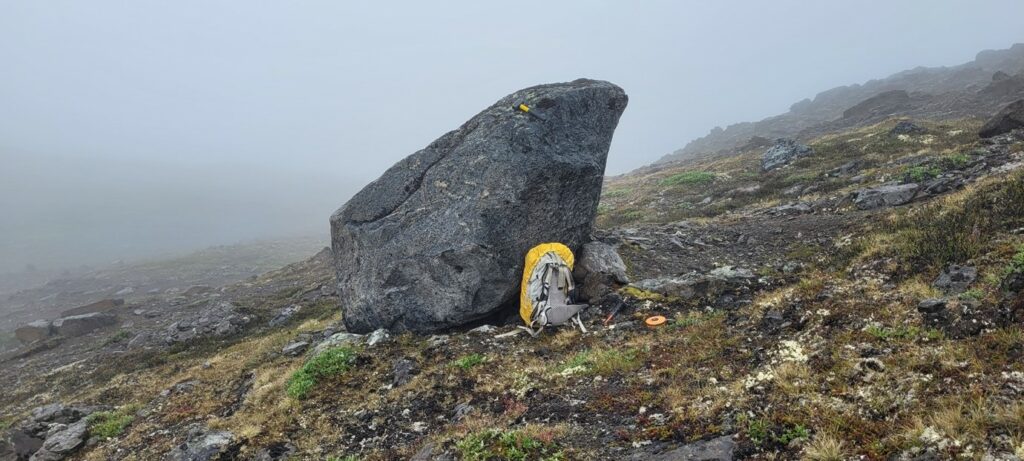
The first couple of days, we headed out mapping and identifying potential sample locations. Based on our mapping results, we planned sampling routes to be as efficient as possible in the field. This two-step process was repeated many times and of key importance since our rock sampling capacity was restricted by our battery power. Usually, one battery lasted for about eight to nine cuts (approximately one sample). Thus, we only took samples of the most promising erratic boulders.
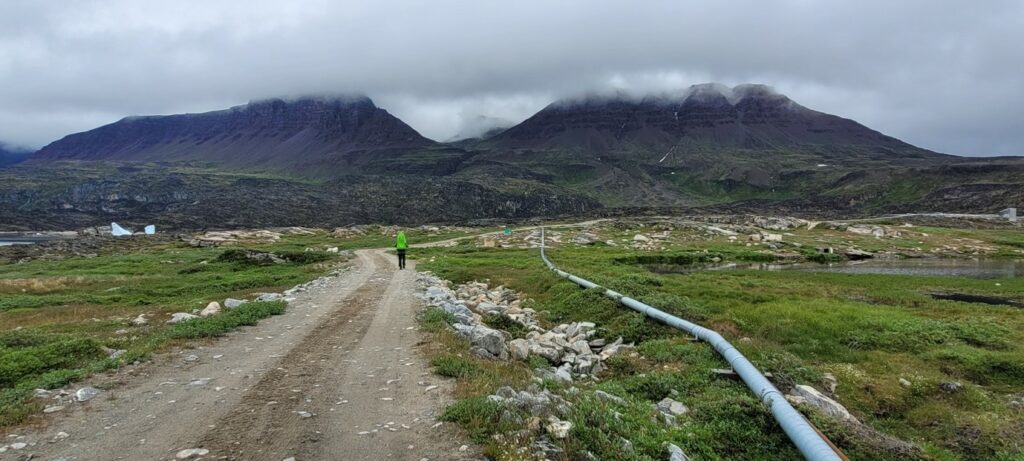
Overall, the structure of our field work was dictated by the weather. Long hikes (e.g. up to the plateau) were only taken under stable and good weather conditions. In moderate to poor conditions, we focused on the coastal part of the field campaign.
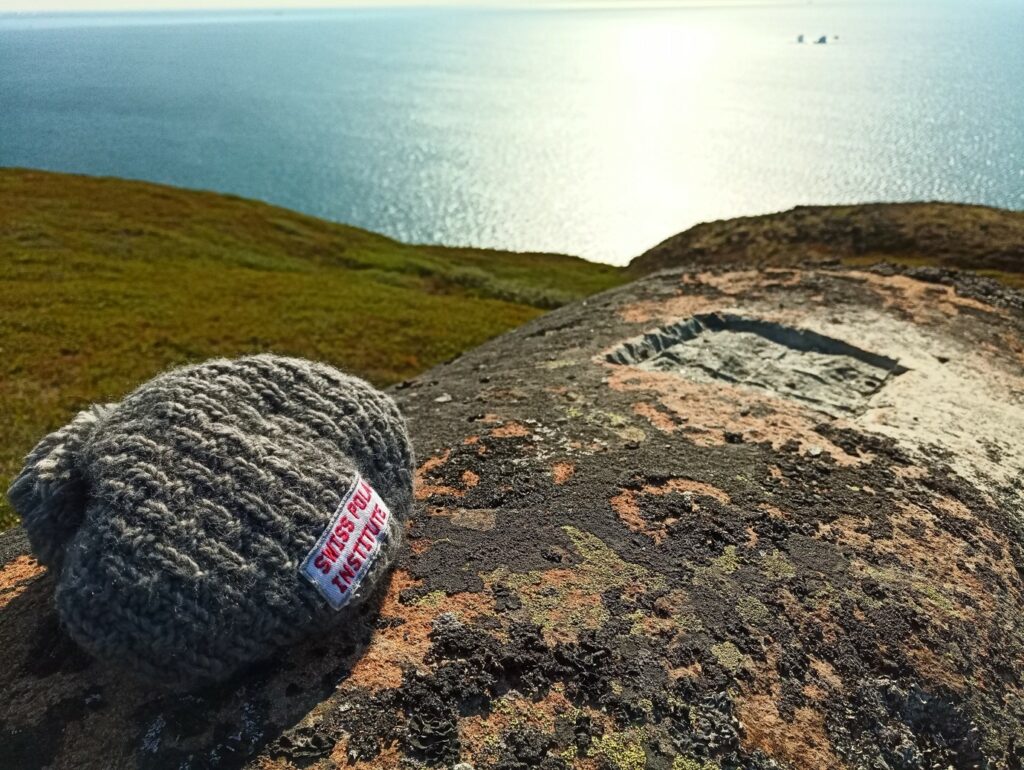
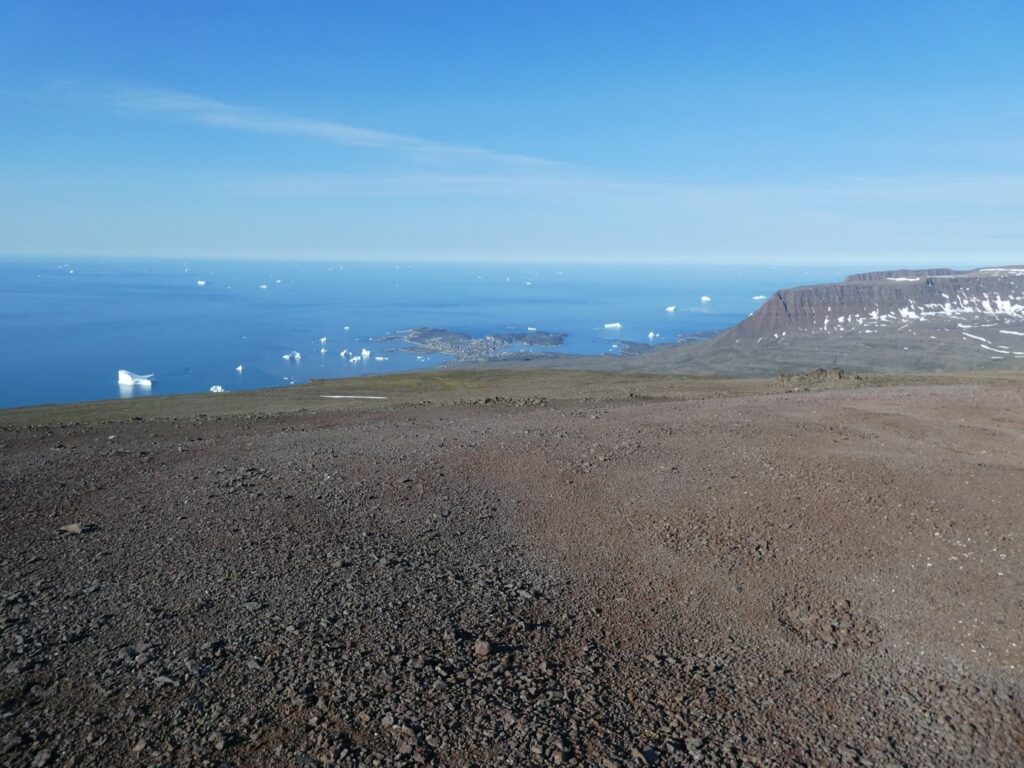
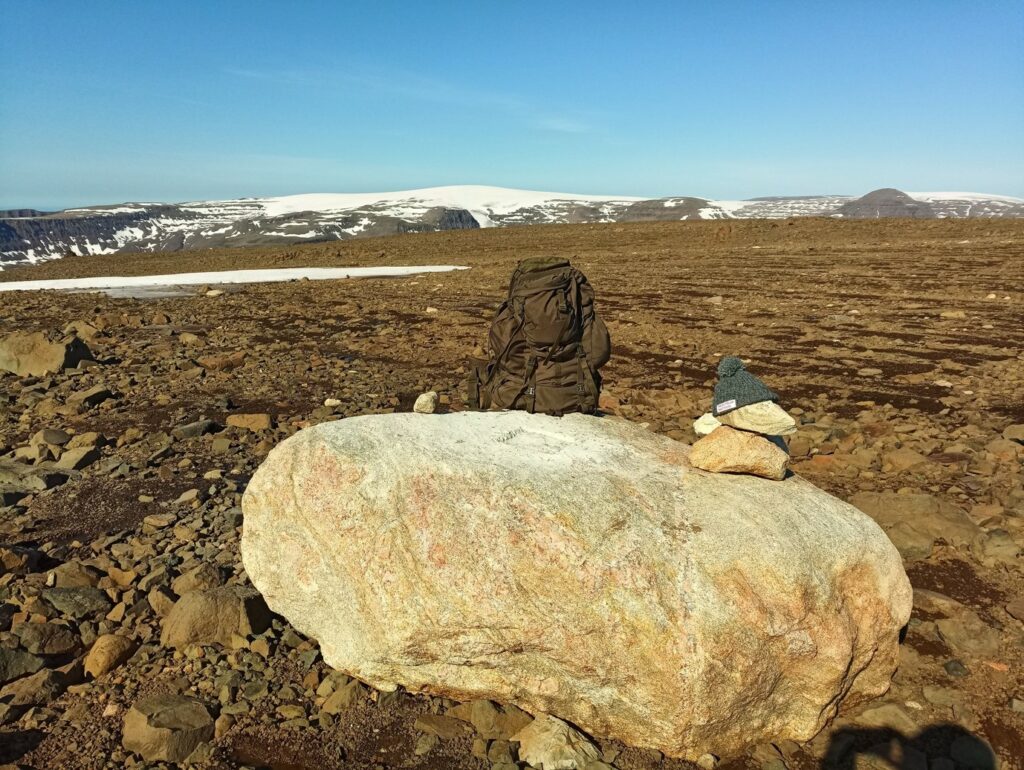
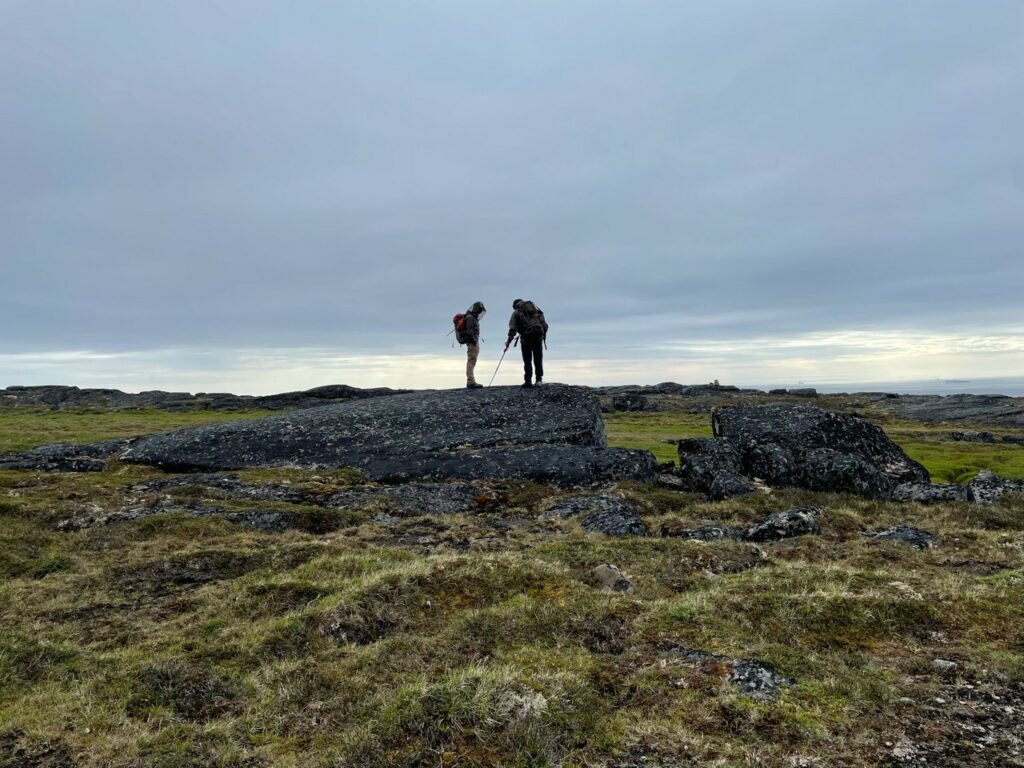
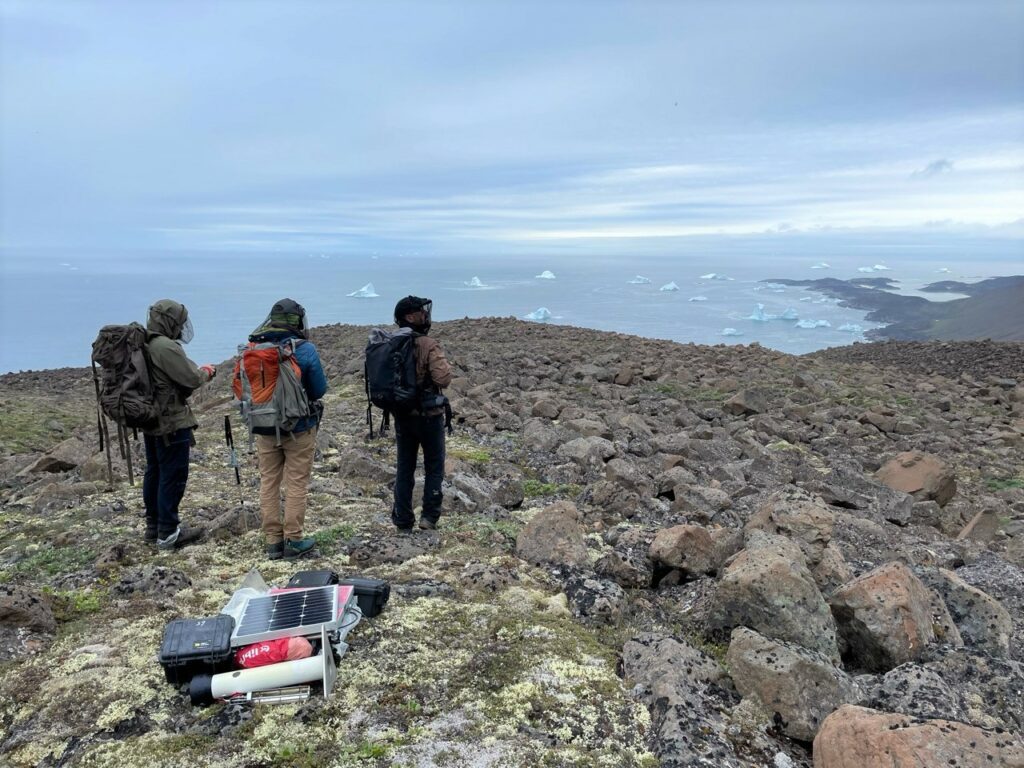


Taking surface samples with our electrical stone saw. And yes, I have (duct-)taped my right shoe (right picture). © 2021 Gerald Raab, Alessandro Cicoira all rights reserved
The standard equipment for taking rock samples is basic. It consists of an electrical stone saw, a couple of batteries, hammer and chisel. Although this equipment lasted throughout the field campaign, my hiking boots did not. All attempts to hold the sole on the shoe with glue and duct tape did not help. Luckily, I had a second pair of boots with me, because all the available shoe sizes on Disko Island were unfortunately too small.
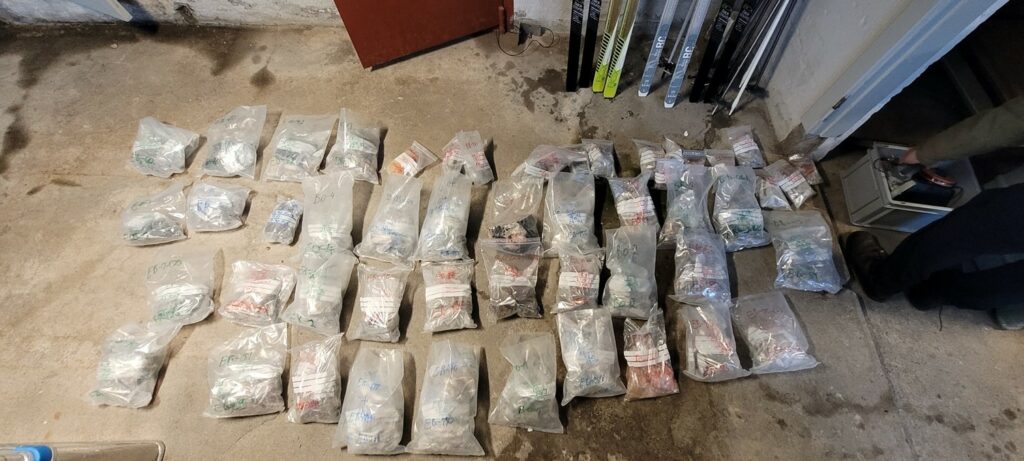
Of course, erratic boulders and mafic bedrock are not the only things that we admired in this remote area. Icebergs are continuously drifting around the island: watching them being moved by the wind and currents is calming and relaxing after 16 hours of daily field work.
Currently we await the arrival of the samples, which are still in Denmark. Hopefully, all of them will arrive safely in Switzerland so we can start with the laboratory work as soon as possible.
In summary we have taken the first comprehensive rock sample set from coast to the top of the plateau on Disko Island. I believe these samples are among the highest-collected erratic samples in Greenland so far. In addition, we also collected the most western bedrock sample in Disko Bugt. Thus, I do not just consider our field samples to be unique, I am also highly excited what knowledge about ice sheet and glacial dynamics they will reveal for us. I thank the Swiss Polar Institute for providing funds for this research project. Undoubtedly, without the support of the SPI this project would not have been possible in the near future.
Gerald Raab is early-career researcher at the University of Zurich and Dalhousie University. His field trip took place in summer 2021 with financial support from a Polar Access Fund grant.
Header photograph: Icebergs drifting around in Disko Bugt. © 2021 Gerald Raab, all rights reserved